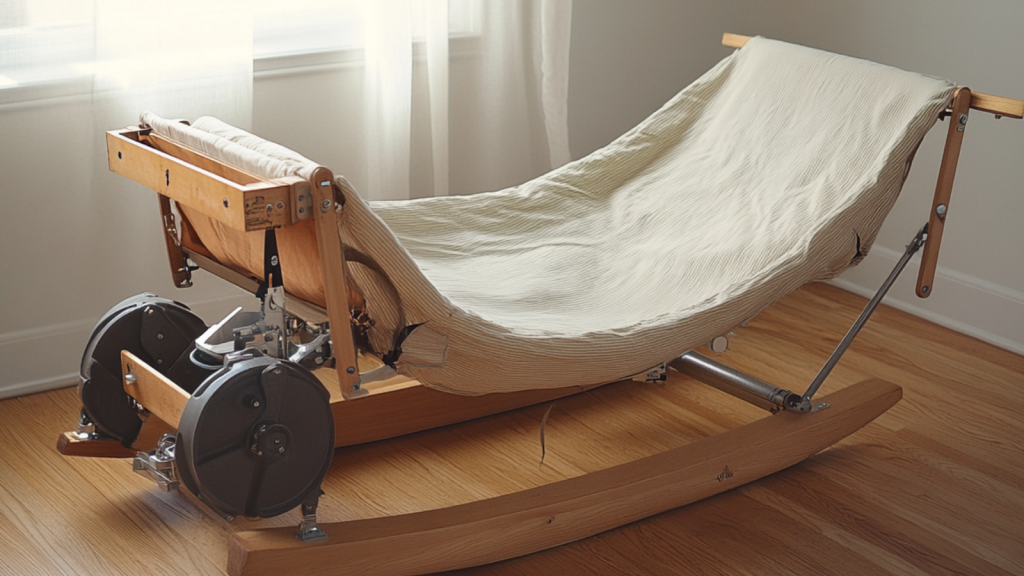The 1950s were a fascinating time for innovation, but not all ideas stood the test of time—especially when it comes to parenting. Back then, safety regulations weren’t as strict, and many products prioritized convenience or novelty over actual child safety. Some of these gadgets are so wild, it’s hard to imagine they ever existed, let alone were marketed to parents as “helpful.” Looking back now, we can only laugh (and cringe) at how far we’ve come in understanding what kids really need to grow up happy and healthy.
From bizarre car seats to questionable feeding tools, these 11 gadgets are reminders of a different era—and why they’re better left in the past.
Baby Cage for Apartment Windows

In cities with little outdoor space, parents once hung metal cages out of apartment windows to let their babies “get fresh air.” These contraptions were essentially wire boxes that dangled several stories above the ground. While it might sound practical in theory, it’s hard to ignore the heart-stopping danger of placing a baby in a cage suspended by metal hooks.
Cigarette Holder for Nursing Moms

Smoking was everywhere in the 1950s, even in homes with newborns. One particularly shocking invention was a cigarette holder designed for breastfeeding moms. It allowed mothers to smoke while nursing without worrying about ash falling on the baby. Today, we know about the dangers of secondhand smoke, making this gadget seem even more absurd.
Lead-Infused Baby Rattles

Lead was a common material in the 1950s, and it showed up in everything from paint to children’s toys. Baby rattles made with lead were not uncommon and were sometimes even painted with toxic, brightly colored coatings. The long-term health risks of lead exposure are now well-documented, but back then, it was just another day in parenting.
Car Seat Booster Without Seatbelts

The 1950s car seats were less about safety and more about letting kids see out the window. Many were nothing more than padded stools that sat loosely on the backseat. With no seatbelts or restraints, these gadgets turned into dangerous projectiles in the event of a crash.
“Self-Rocking” Cribs Powered by Motors

These cribs had built-in motors that rocked babies to sleep. However, the motors were often too powerful, creating a jerky and unsafe motion. There were even reports of babies being jostled out of the crib entirely.
Baby Restraint Swaddles

Some parenting manuals from the 1950s promoted swaddles that immobilized a baby entirely, leaving them unable to move their arms or legs. These were marketed as a way to keep babies calm, but they often led to frustration and hindered motor development.
Feeding Bottles With Long Tubes

To let babies feed themselves, some companies created bottles with long rubber tubes and nipples on the end. These tubes were difficult to clean and became breeding grounds for bacteria, leading to a spike in digestive illnesses.
Metal Teething Keys

Teething keys are still a thing, but the ones from the 1950s were made entirely of metal. They often had sharp edges and paint that chipped off easily, posing choking and toxicity risks.
Sleep-Sack Carriers

These carriers were essentially sacks with shoulder straps for parents to carry their babies around. Without proper leg support or structure, they put undue stress on a baby’s hips and spine.
Chlorinated Baby Pools

Backyard baby pools in the 1950s were sometimes filled with water treated with high levels of chlorine to “kill germs.” The strong chemicals caused skin irritation and even chemical burns on delicate skin.
Baby Backseat Hammocks

These hammocks stretched across the backseat of a car to let babies sleep while traveling. They had no restraints and turned into dangerous projectiles during sudden stops or crashes, making them a huge safety hazard.
15 Historical Mysteries That Still Baffle Experts Today

Will the final resting place of Cleopatra and the secrets of the Ark of the Covenant ever surface? The unresolved threads of history, from the identity of JFK’s assassin to the fate of the crew of the Mary Celeste, are as intriguing as they are elusive. Experts have tackled many of these mysteries for hundreds of years, and they’re still baffled.
Read More: 15 Historical Mysteries That Still Baffle Experts Today
Ellen has been obsessed with logic puzzles, jigsaws, and cryptograms since she was a kid. After learning she was taught how to play chess wrong by a family friend (so they could win), she joined her school chess club and the rest is history.


